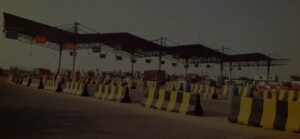Today, kerb stone is one of the most ubiquitous civil engineering element, yet we barely give them a moment’s notice. It is a constricted stone or a concrete solid which fixes end to end with other solids to form a Kerb. It makes the drivers conscious of the pavements and greenery areas in demarcating roads, streets, car parks etc.
An integral, yet underestimated feature of urban design, a kerb is the most effective solution to separate and provide visual definition of carriageways, footpaths and cycle tracks. It not only offers physical benefits, but aesthetic advantages too. Making the right choice of kerb edges and stones can have a significant impact on the look and feel of a landscaping or construction project. They are available in a bewildering array of sizes, materials and configurations so it is easy to get lost in trying to find the right kerb for the right job.
Kerbs are not only an excellent option for road barriers but perform a variety of functions, many of them simultaneously like- retain the edge of the top layers of a pavement, to provide a check or channel for surface water management, pedestrian crossing points, making buses accessible, creating protected cycle tracks etc. They have shown excellence in creating lawn boundaries in houses and parks, edges along pavements, squares, car parks. They are a match for even the most rigorous demands and can withstand challenging conditions all the while guaranteeing the visual appeal of your design creativity.


There are a variety of kerb types available, some come as standard stock from suppliers and some have to be specially made or produced to order. Made with tractable technology and the flying aspect components and materials, kerbstones ride era resistance to all weather conditions, mechanical loads and also against the chemicals used in road cleaning. Kerb stone helps in making a road utmost twice, correlated with a road without them and helps in retaining the structural integrity of roads. Kerbs like mountable kerbs also known as low kerbs are used to form road edging and are ideal to form the edges of traffic islands and crossings. These kerb stones play a principal role and promise the traffic to remain in the correct lane and also allow the driver to be in restricted area with little difficulty. They have a sloping face rather than an abrupt angle and this enables vehicles to drive over them easily. These are mainly laid at medians and channelization schemes, also help in longitudinal drainage.
On the other hand, barrier kerbs are designed to prevent vehicle encroachment on the roadside and are steep-faced. Some of their main functions include- to discourage vehicles from using areas outside the travelled way which is not intended for vehicular travel, to control parking of vehicles, to control drainage and to reduce the risk of pedestrians. They are used on sections of road where separation of opposing traffic is essential due to the high safety risks associated with traffic volumes, percentage of heavy vehicles, speed, crash history etc. On highways, with speed limit of over 70 km/h, kerb stone barriers should be avoided because impact with kerbing on high-speed roads may overturn a vehicle or result in a vehicle becoming airborne. When this barrier is positioned along the edge of a traffic lane, it gives drivers a sense of restriction. Large vehicles when travelling along Kerbed carriageways have no additional space in which to manoeuvre or to allow for sway of the rear trailer. So, it is recommended to avoid this type of kerbing on roads with restricted lane width and high percentage of heavy vehicles. The kerb stone barriers along with traffic control, reduce the risk to pedestrians. This not only acts as a physical barrier but a psychological too. The reason being, drivers ten to shy away from the kerb line. For this whole reason, barrier kerbing is recommended in built-up areas adjacent to footpaths with considerable pedestrian traffic, shared use paths and also at bus bays.
